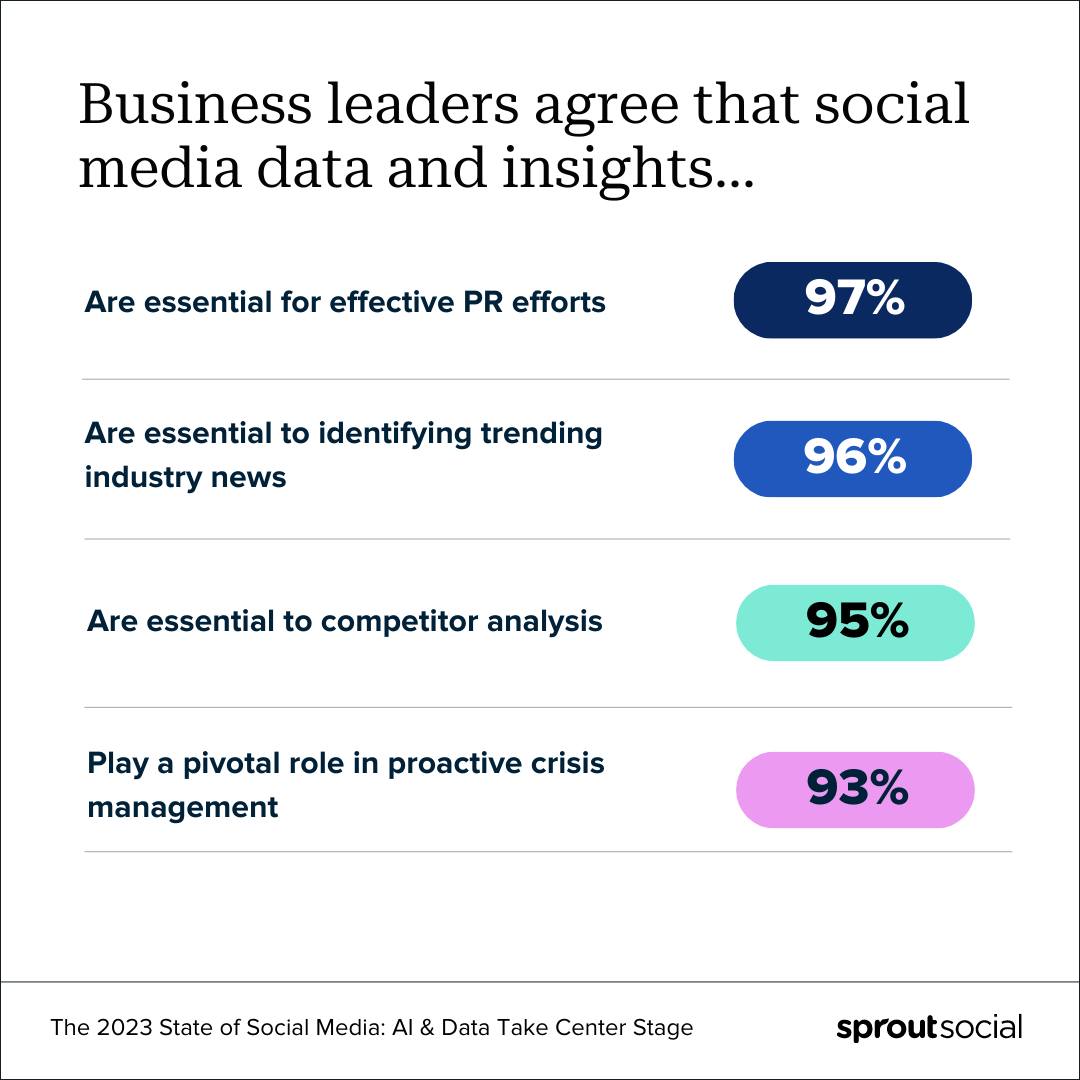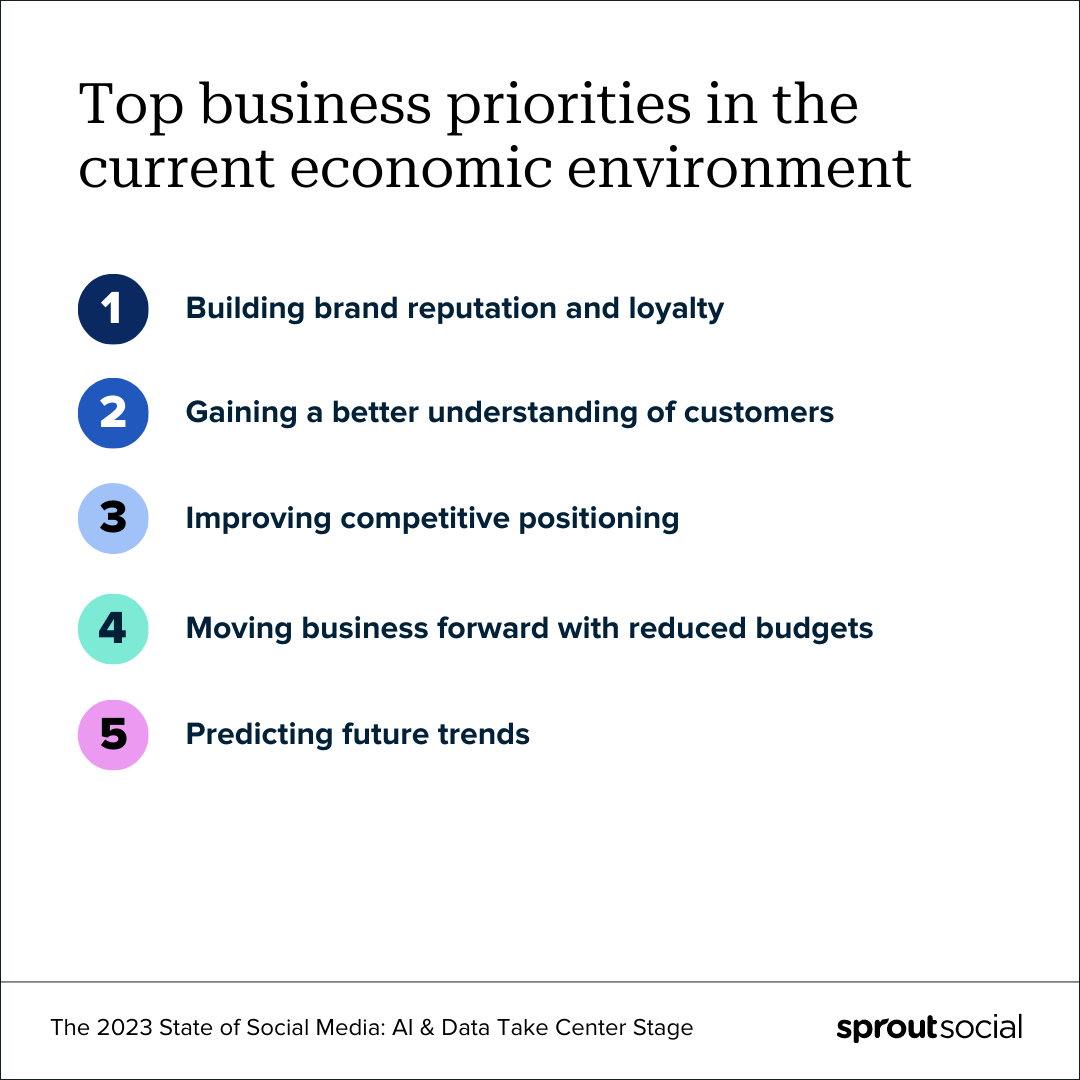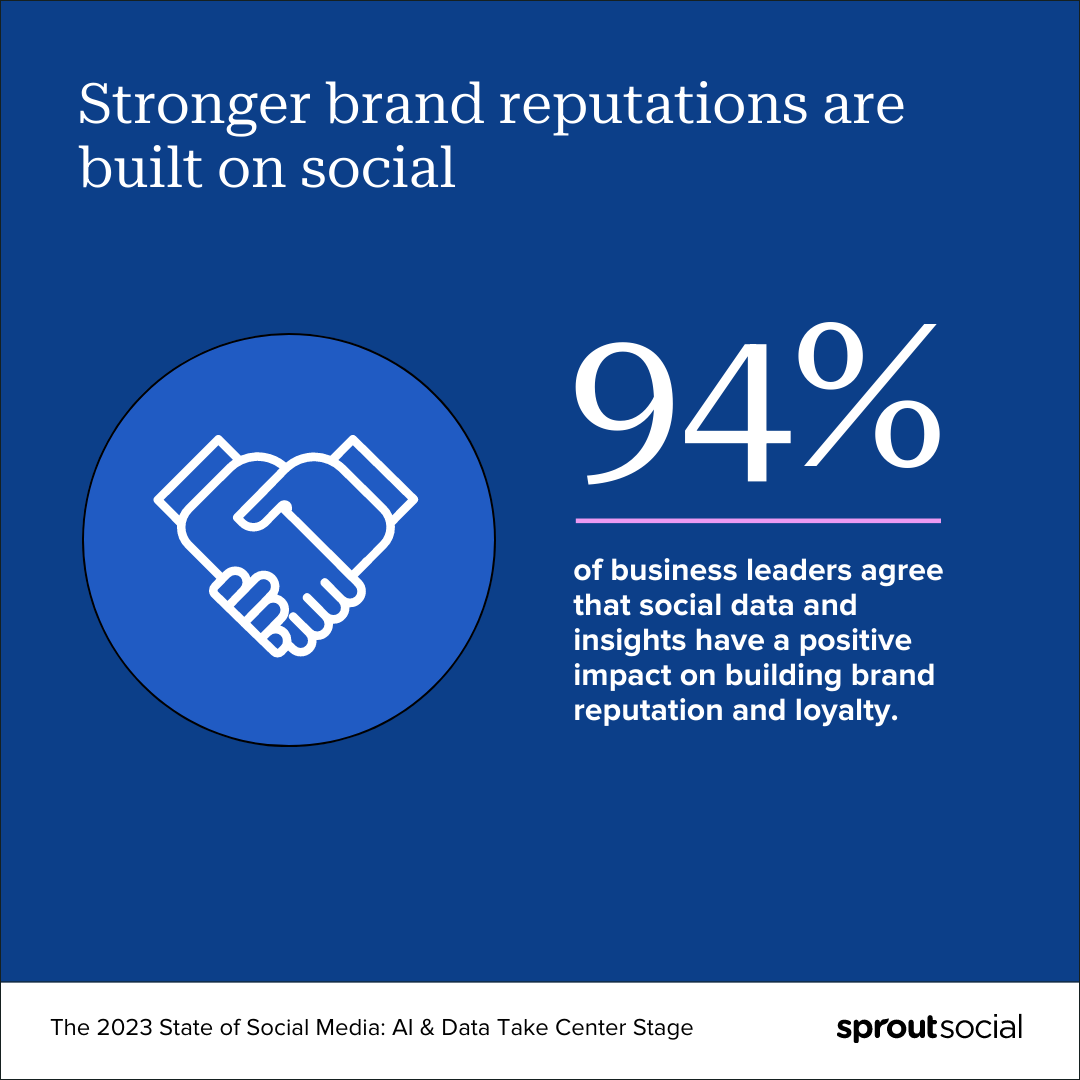Social data can reveal insights needed to interpret consumer behavior, allowing brands to forecast trends and make smarter decisions. It’s more than numbers—it’s real, tangible business impact.
Business leaders agree that social media data and insights are essential for trendspotting, competitor analysis, proactive crisis management and more. Boosting outcomes in these key areas means integrating social into every corner of an organization.

Social media data collection tools have made connecting the dots between efforts and outcomes easier. Businesses looking to reap even more value from social must champion findings with collaborators beyond marketing. When companies adopt a social-first consumer perspective, teams can drive relevance and business impact.
You understand the why, so it’s time to get into the how. These five stories will inspire you to approach social data analysis in new ways, elevating the efforts of your entire team.
Why is social data important?
According to The 2023 State of Social Media Report, the key business priorities in today’s economic environment are: building brand reputation and loyalty, gaining a deeper understanding of customers, improving competitive positioning, moving forward with reduced budgets and predicting future trends.

Social data can enhance all of these outcomes, helping brands stay ahead in increasingly competitive conditions. It’s about more than just your performance data. When you dive into the industry, competitive and cultural insights social can provide, you unlock the tools needed to stand out in a crowded market.
This value isn’t limited to your marketing organization, either. From product development to customer support, social data analysis can answer a brand’s most important questions about how to manage and expand a business across every department.
Use social data to zero in on what’s building brand reputation and loyalty
Social data allows businesses to build deeper connections with their audience, elevating products and services from “wants” to “needs”. It’s no surprise that business leaders near-unanimously (94%) agree that social data and insights have a positive impact on building brand reputation and loyalty.

The combined power of performance data and social-first brand health insights gives businesses an enhanced perspective on what’s moving the needle with their audience. Even marketers navigating complex and highly-regulated industries can rely on social data to help humanize a brand and shape its reputation.
Take Plaid, for example. The San Francisco-based fintech company makes it easy for people to connect their financial accounts to their favorite apps and services safely and securely. The brand’s success hinged on a ton of stakeholder education—for both consumers and financial institutions who were unfamiliar with the technology.
Matthew McConnell, Plaid’s Social Media Lead, says the channel plays a key role in managing brand perception. “We want to empower our followers with useful content, so they can help spread the word about Plaid.”
With help from Sprout Social, Plaid has created a data-driven feedback loop that supports sharper messaging, raising both brand awareness and reputation. “Tagging in Sprout helps us know which content we’re sharing that’s performing best,” says McConnell. “And if something isn’t working well, we can dig in to understand why, and recalibrate our strategy to make sure we’re providing our diverse audiences with access to the information they want, in the way they want to consume it.”
Use social data to understand your customers
If your social data analysis is limited to your brand’s performance metrics, you’re not tapping the full value of social. With social listening, brands can zoom out and listen to the larger social conversations happening around their industry, competitors and most importantly, their audience.
Goally—a technology company on a mission to ease the lives of families with neurodiverse individuals—uses Sprout’s Social Listening tools to stay in lockstep with the families they support. Through industry and brand health analysis, Kaelyn Brooks, Digital Marketing Specialist at Goally, surfaced a common need of parents raising neurodiverse children: They want to see their children become independent.
“That learning has really validated our vision as a company,” says Brooks. “We know the problem we’re chasing is real, and we’re providing a solution—a really good one, too. Education is often lacking in the world of neurodiversity, and people don’t know where to get information. Social media channels like TikTok offer a unique and accessible way for people to ask authentic questions and get answers.”
These learnings are rooted in the needs and preferences of existing and potential customers, serving as a north star for Goally’s messaging.
Analyze social data to improve competitive positioning
Casey’s is looking to increase its slice of the pizza market—and their team is relying on social to fuel their game plan.

The midwest-staple is a go-to spot for gas, groceries, gifts and for those in the know, pizza. Casey’s handmade pizza has so many diehard fans, the convenience store is actually the fifth-largest pizza chain in the nation.
Jasmine Riedemann, Social Media Manager at Casey’s, uses Sprout’s Tagging and Social Listening features to inform localized campaigns for customers–designed to cement their status as pizza pros. The team then leverages this social data analysis to refine their creative approach.
“During our biweekly check-in with our creative and social teams, we look at the Post Performance Report more in-depth and also examine real-time trends to decide whether we should shift gears with our content plan to take advantage of those trends,” says Riedemann.

Even if your brand isn’t operating in a space that is as universally well-loved as pizza, you can still use social data to uncover vital competitive insights. Just like the team at Flock Freight.
“We did an analysis of all the other players (peers and competitors) in the logistics and supply chain space,” says Bob Wolfley, Director of Social Media and Partnerships at Flock Freight. “Some trucking companies recognize drivers in certain ways, but they don’t do deep storytelling. Those insights showed us we had an opportunity to tell these stories in a fun, yet meaningful way. There’s a mix of tones, which we love because there are opportunities for truck drivers to relate when they find and consume this content.”
Rely on predictive data to inform customer service needs
Seasonality in customer service can create major staffing challenges. Do you staff up and stomach the unnecessary labor costs? Or keep a lean ship and risk falling short on customer expectations?

Hudl—a software company offering performance analysis tools for sports teams and athletes—knows this problem well. Luckily, with help from Sprout Social, their team is able to accurately forecast customer engagements so they can staff smarter.
“One of the most helpful metrics we get from Sprout is volume—especially, our seasonal volume,” says Jessie Koenig, Revenue Systems Administrator at Hudl. “We don’t train every rep to handle social media work. And in the past, it was very difficult for us to forecast our staffing. The reports we generate from Sprout allow us to gauge when we need to ramp up social support, and when it’s best to guide customers to self-service support and tutorials.”
Thanks to social data, the Hudl team is able to provide game-changing customer care year-round. These efforts help increase customer satisfaction and loyalty, while managing costs efficiently.
Predict future trends with data from social listening
Social provides a view of the culture at large, allowing brands to spot trends before they reach their peak.

In an interview with Glossy, L’Oréal Chief Digital and Marketing Officer revealed the brand uses social listening to stay on top of an increasingly short trend cycle. “If everyone is talking about this Y2K aesthetic right now and we show up one year later, we’ve completely missed this train,” says Wen. “So in order for us to do that, it has to first start from a position where we’re listening and two, have that capability in-house for us to activate very, very quickly.”
Social’s impact on the beauty industry is well-known and documented, but it’s not a rare phenomenon. Brands across industries are harnessing the power of social data analysis to stay ahead of trends.
When Lodge Cast Iron kicked off routine social listening efforts, they quickly discovered a new market segment emerging: vegans. It turns out the brand had a growing fan-base within the vegan community, yet the majority of their content was geared toward meat-eaters.
Social media market research allowed the Lodge Cast Iron team to take a bold approach with a brand-new audience. They began sharing meatless recipe ideas to widen their audience engagement strategy, opening their brand up to new fans.
Let your social data lead the way
In a perfect world, each marketer would have a crystal ball that shows them how to meet their customers efficiently and effectively. Unfortunately, we’ve yet to discover the marketing magic needed to pull that off. Until then, we can give you the next best thing: Sprout Social’s suite of social media analytics and listening tools.
With Sprout, you can join these forward-thinking companies and start making better business decisions faster. Sign up for trial today, and see how Sprout Social can help you unlock the true potential of your social media strategy.
Sign Up for a Free 30-day Sprout Trial